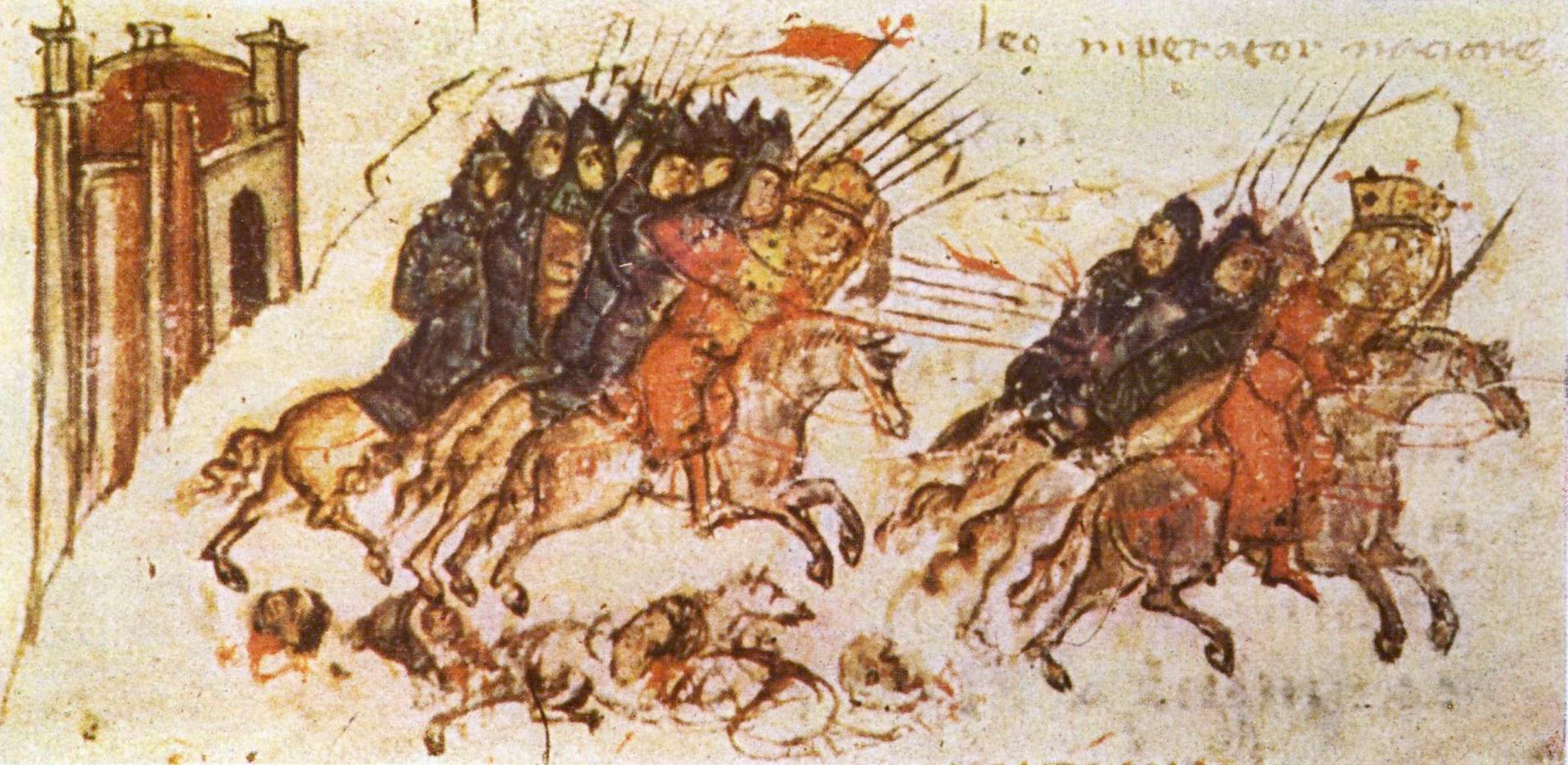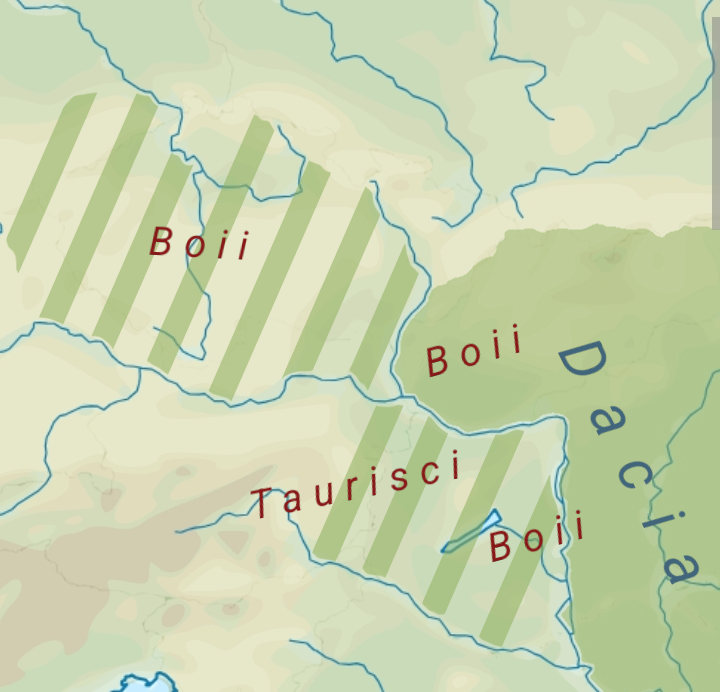|
827 Births
__FORCETOC__ Year 827 ( DCCCXXVII) was a common year starting on Tuesday of the Julian calendar. Events By place Byzantine Empire * June 14 – Euphemius, exiled Byzantine admiral, asks for the help of North African Arabs, to retake Sicily and Malta from the Byzantines. Emir Ziyadat Allah I of Ifriqiya promises to return the islands to Euphemius, in exchange for a yearly tribute, and sends an Arab Muslim expeditionary force of 10,000 men under the 70-year-old Asad ibn al-Furat, which lands at Mazara del Vallo in Sicily. * Fall – Siege of Syracuse: Muslim forces under Asad ibn al-Furat, in support of the rebel Byzantine army, besiege Syracuse, Sicily. Europe * Summer – Omurtag, ruler ('' khan'') of the Bulgarian Empire, launches an attack to the West, and penetrates into Pannonia. He expels the local chiefs, and installs Bulgar governors over the Slavic tribes to control them. Omurtag conquers the cities of Beograd, Braničevo, Sirmium, and most ... [...More Info...] [...Related Items...] OR: [Wikipedia] [Google] [Baidu] |
Omurtag Of Bulgaria
Omurtag (or Omortag) (died 831) also known as Murtag or Murtagon (; Веселин Бешевлиев, Първобългарски надписи. 2ed. София 1992. Chapter: VI. Възспоменателни надписи, Inscriptio) was a Great Khan (''Kanasubigi'') of First Bulgarian Empire, Bulgaria from 814 to 831. He is known as "the Builder". In the very beginning of his reign he signed a Byzantine–Bulgarian Treaty of 815, 30-year peace treaty with the neighboring Byzantine Empire which remained in force to the end of his life. Omurtag successfully coped with the aggressive policy of the Frankish Empire to take Bulgaria's north-western lands and suppressed the unrest among several Early Slavs, Slavic tribes. He made administrative reforms which increased the power and the authority of the central government. His reign was marked with a strong development of Bulgarian architecture with a number of significant construction projects. Rise to the throne After the death ... [...More Info...] [...Related Items...] OR: [Wikipedia] [Google] [Baidu] |
Doge (title)
A doge ( , ; plural dogi or doges; see #Usage, below) was an elected lord and head of state in several Italy, Italian city-states, notably Republic of Venice, Venice and Republic of Genoa, Genoa, during the medieval and Renaissance periods. Such states were referred to as crowned republics. Doges wore a special hat, the Corno ducale and usually ruled life-long. The office of the doge in English is termed a ''dogeship''. Etymology The word ''doge'' comes from Venetian language, Venetian Italian, and, like its standard Italian language , Italian cognate ''duce'' (as in Benito Mussolini , Mussolini's title "Il Duce"), is derived from the Latin ', meaning either "spiritual leader" or "military commander". The political term ''doge'' reached English language, English via French language, French, along with the related English derivation ''duke''. In standard Italian language, Italian, the two derivations from the Latin word ''dux'' – ' and ' (both masculine; feminine: ') – a ... [...More Info...] [...Related Items...] OR: [Wikipedia] [Google] [Baidu] |
Giovanni I Participazio
Giovanni I Participazio (or ''Particiaco'') (died 837) was the tenth (historical) or twelfth (traditional) Doge of Venice from the death of his brother in 829 to his arrest and deposition in 836. History His father, Agnello, had appointed him co-doge while his brother Giustiniano was away in Constantinople. When Giustiniano returned, Agnello was deposed and Giovanni, who was part of the pro- Frankish faction, was exiled to Zara (in today's Croatia). Giovanni was recalled by his brother from Constantinople in 829 and appointed to succeed him. He was duly elected by the assembly and continued the work of Giustiniano in the construction of a new basilica for the body of Saint Mark. The rest of his reign was occupied by quarrels and problems, internal and external. The first problem was the return of Obelerio degli Antenori, Doge of Venice from 804 to 811, from Constantinople after twenty years of exile. He disembarked at Vigilia, near Malamocco, with a band of followers and ... [...More Info...] [...Related Items...] OR: [Wikipedia] [Google] [Baidu] |
Giustiniano Participazio
Giustiniano Participazio (; died 829) was the eleventh (traditional) or ninth (historical) Doge of Venice from 825 to his death. His four years on the ducal throne were very eventful. He was made hypatus by the Byzantine emperor Leo V the Armenian. History Giustiniano was away in Constantinople when his father, the then-reigning Doge Agnello, appointed his younger brother Giovanni as co-doge. When Giustiniano returned, he flew into a fury. Agnello appointed his third son, also Agnello, co-doge and began to oppose Giustiniano, even besieging him in the church of San Severo. Giustiniano gained the upper hand, however, and exiled his younger brother and succeeded his father as doge in 827. He was married to a woman named Felicita. The Byzantine Emperor, Michael II, offered military support to Venice in return for a contingent of Venetians in his expedition against the Aghlabid expeditionary force at Sicily. The success of the expedition increased the prestige of the city. Whi ... [...More Info...] [...Related Items...] OR: [Wikipedia] [Google] [Baidu] |
Slavonia
Slavonia (; ) is, with Dalmatia, Croatia proper, and Istria County, Istria, one of the four Regions of Croatia, historical regions of Croatia. Located in the Pannonian Plain and taking up the east of the country, it roughly corresponds with five Counties of Croatia, Croatian counties: Brod-Posavina County, Brod-Posavina, Osijek-Baranja County, Osijek-Baranja, Požega-Slavonia County, Požega-Slavonia, Virovitica-Podravina County, Virovitica-Podravina, and Vukovar-Syrmia County, Vukovar-Syrmia, although the territory of the counties includes Baranya (region), Baranya, and the definition of the western extent of Slavonia as a region varies. The counties cover or 22.2% of Croatia, inhabited by 806,192—18.8% of Croatia's population. The largest city in the region is Osijek, followed by Slavonski Brod and Vinkovci. Slavonia is located in the Pannonian Basin, largely bordered by the Danube, Drava, and Sava rivers. In the west, the region consists of the Sava and Drava valleys and ... [...More Info...] [...Related Items...] OR: [Wikipedia] [Google] [Baidu] |
Sirmium
Sirmium was a city in the Roman province of Pannonia, located on the Sava river, on the site of modern Sremska Mitrovica in the Vojvodina autonomous province of Serbia. First mentioned in the 4th century BC and originally inhabited by Illyrians and Celts, it was conquered by the Romans in the 1st century BC and subsequently became the capital of the Roman province of Pannonia Inferior. In 293 AD, Sirmium was proclaimed one of the four capitals of the Roman Empire. It was also the capital of the Praetorian prefecture of Illyricum and of Pannonia Secunda. The site is protected as an archaeological Site of Exceptional Importance. The modern region of Syrmia (Srem or Srijem) was named after the city. Sirmium purportedly had 100,000 inhabitants and was one of the largest cities of its time. Colin McEvedy, whose estimates for ancient cities are much lower than the general consensus, put the population at only 7,000, based on the size of the archaeological site. The amount of gra ... [...More Info...] [...Related Items...] OR: [Wikipedia] [Google] [Baidu] |
Braničevo (region) since 1955
{{disambiguation, geo ...
Braničevo may refer to: * , a region in Serbia * Braničevo Fortress, a fortress in Serbia, in Selo Kostolac * Braničevo District, a district in Serbia * Braničevo (Golubac), a village in Serbia, in the municipality of Golubac * Serbian Orthodox Eparchy of Braničevo, an eparchy (diocese) of the Serbian Orthodox Church * Siege of Braničevo (1154) * ''Braničevo'' (magazine), a literary magazine published in Požarevac Požarevac ( sr-cyr, Пожаревац, ) is a list of cities in Serbia, city and the administrative centre of the Braničevo District in eastern Serbia. It is located between three rivers: Danube, Great Morava and Mlava and below the hill Čač ... [...More Info...] [...Related Items...] OR: [Wikipedia] [Google] [Baidu] |
Belgrade
Belgrade is the Capital city, capital and List of cities in Serbia, largest city of Serbia. It is located at the confluence of the Sava and Danube rivers and at the crossroads of the Pannonian Basin, Pannonian Plain and the Balkan Peninsula. The population of the Belgrade metropolitan area is 1,685,563 according to the 2022 census. It is one of the Balkans#Urbanization, major cities of Southeast Europe and the List of cities and towns on the river Danube, third-most populous city on the river Danube. Belgrade is one of the List of oldest continuously inhabited cities, oldest continuously inhabited cities in Europe and the world. One of the most important prehistoric cultures of Europe, the Vinča culture, evolved within the Belgrade area in the 6th millennium BC. In antiquity, Thracians, Thraco-Dacians inhabited the region and, after 279 BC, Celts settled the city, naming it ''Singidunum, Singidūn''. It was Roman Serbia, conquered by the Romans under the reign of Augustus and ... [...More Info...] [...Related Items...] OR: [Wikipedia] [Google] [Baidu] |
Slavs
The Slavs or Slavic people are groups of people who speak Slavic languages. Slavs are geographically distributed throughout the northern parts of Eurasia; they predominantly inhabit Central Europe, Eastern Europe, Southeastern Europe, and Northern Asia, though there is a large Slavic minority scattered across the Baltic states and Central Asia, and a substantial Slavic diaspora in the Americas, Western Europe, and Northern Europe. Early Slavs lived during the Migration Period and the Early Middle Ages (approximately from the 5th to the 10th century AD), and came to control large parts of Central, Eastern, and Southeast Europe between the sixth and seventh centuries. Beginning in the 7th century, they were gradually Christianized. By the 12th century, they formed the core population of a number of medieval Christian states: East Slavs in the Kievan Rus', South Slavs in the Bulgarian Empire, the Principality of Serbia, the Duchy of Croatia and the Banate of B ... [...More Info...] [...Related Items...] OR: [Wikipedia] [Google] [Baidu] |
Bulgars
The Bulgars (also Bulghars, Bulgari, Bolgars, Bolghars, Bolgari, Proto-Bulgarians) were Turkic peoples, Turkic Nomad, semi-nomadic warrior tribes that flourished in the Pontic–Caspian steppe and the Volga region between the 5th and 7th centuries. They became known as Eurasian nomads, nomadic equestrians in the Volga-Ural region, but some researchers trace Bulgar ethnic roots to Central Asia. During their westward migration across the Eurasian Steppe, the Bulgar tribes absorbed other tribal groups and cultural influences in a process of ethnogenesis, including Iranian peoples, Iranic, Finno-Ugric peoples, Finno-Ugric, and Huns, Hunnic tribes. The Bulgars spoke a Turkic languages, Turkic language, the Bulgar language of the Oghur languages, Oghuric branch. They preserved the military titles, organization, and customs of Eurasian steppes as well as pagan shamanism and belief in the sky deity Tengri, Tangra. The Bulgars became semi-sedentary during the 7th century in the Pontic- ... [...More Info...] [...Related Items...] OR: [Wikipedia] [Google] [Baidu] |
Pannonia
Pannonia (, ) was a Roman province, province of the Roman Empire bounded on the north and east by the Danube, on the west by Noricum and upper Roman Italy, Italy, and on the southward by Dalmatia (Roman province), Dalmatia and upper Moesia. It included the modern regions western Hungary, western Slovakia, eastern Austria, northern Croatia, north-western Serbia, northern Slovenia, and northern Bosnia and Herzegovina. Background In the Early Iron Age, Transdanubia was inhabited by the Pannonians or Pannonii, a collection of Illyrians, Illyrian tribes. The Celts invaded in the Late Iron Age and Gallo-Roman culture, Gallo-Roman historian Pompeius Trogus writes that the Celts were met with heavy resistance from the locals and were not able to overrun the southern part of Transdanubia. Some tribes advanced as far as Delphi, with the Scordisci settling in Syrmia (279 BC) upon being forced to withdraw. The arrival of the Celts in Transdanubia disrupted the flow of amber from the Balti ... [...More Info...] [...Related Items...] OR: [Wikipedia] [Google] [Baidu] |





